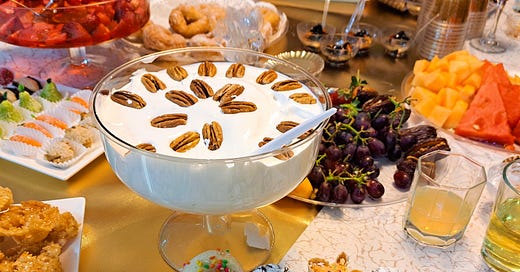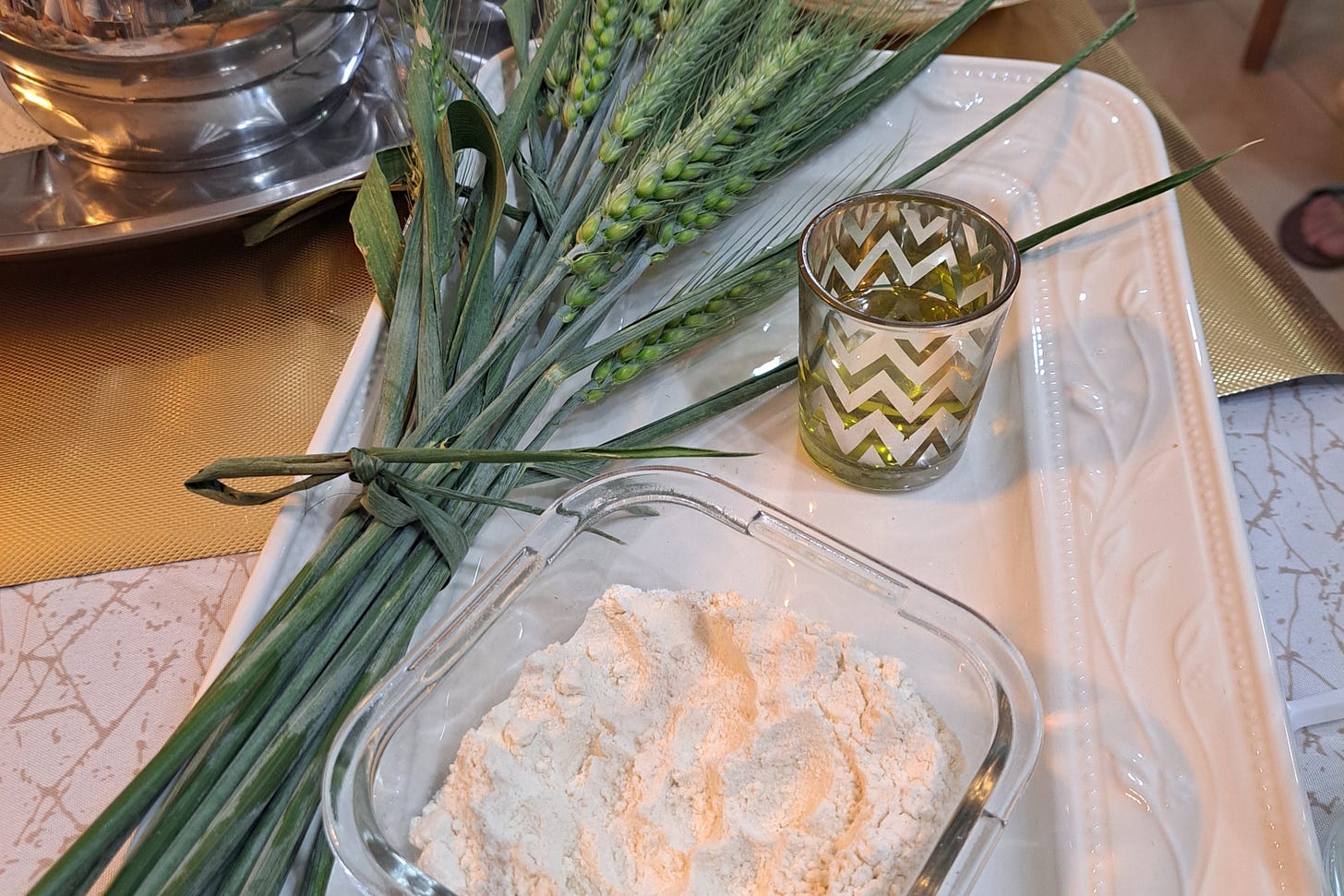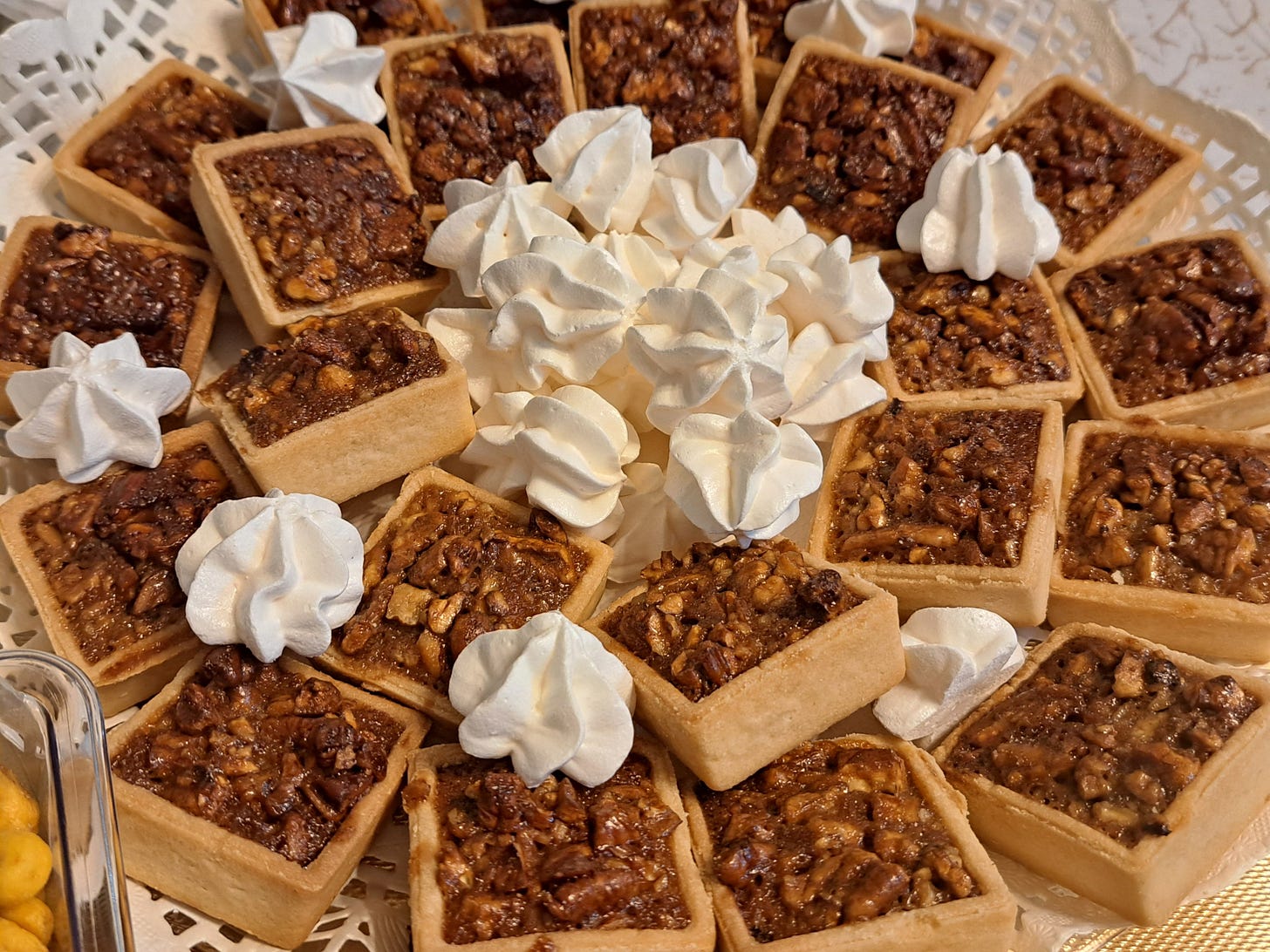Last night, after seven days of abstaining from eating ‘chametz’ (products made from wheat, barley, rye, oats or spelt that has come into contact with water and been allowed to ferment and rise), I was invited to celebrate the end of Passover and the return to eating leavened foods, at a traditional Moroccan Mimouna.
Open hearted hospitality at its core, this is a cultural celebration of unity, prosperity and culinary richness, evidenced by an overflowing table of beautifully crafted sweet treats and traditional delicacies, made predominantly from flour, sugar, oil, honey, dried fruits and nuts.
Traditional Jewish families living in Morocco at the turn of the 19th century customarily ‘sold’ their chametz to their Muslim neighbours before the Passover began, who then used it to bake cakes and biscuits for their Jewish friends, in time for the festival’s ending. Delighted at the neighbourly spirit, the Jews opened their doors to the whole community and warmly invited everyone to share with them their table of festive sweets.
Having never been to an authentic Mimouna celebration until now, I was very excited to experience the traditional festivities and customary practices that it holds for the Maghrebi communities.
I arrived to be greeted my by dear friend Iris, who with floured fingers placed them upon my forehead, like a welcome stamp and blessed me with happiness, as a symbolic gesture to signify the return to abundance and joy following the period of restraint and scarcity. Flour, made from wheat, is the universal staple that embodies physical and spiritual sustenance, and this delightful salutation is offered to fill each guest with nourishment for the year ahead…
Moufleta, a thin, delicate crepe is traditionally served at Mimouna, significant by its humble ingredients that emerge into a rich and unctuous celebratory food. The moufleta batter is a simple mix of flour, water, oil and salt, which is spread very thinly onto a hot griddle and quickly turned over to cook, before another pancake is placed on top. This process continues until about 10 crepes are piled on top of one another and flipped repeatedly until all are slightly crispy at the edges, but remain soft in the centre. Once removed from the pan, they are generously smeared with butter and drizzled with honey, rolled up in a serviette and handed round to each guest.
Other sweet delights included morzia, a delicately spiced, sticky raisin jam, javen, a shiny, bright white sweet nougat, that is spooned into a little bowl and resembles the texture of uncooked meringue, almond paste filled dates and individual handcrafted sugar paste fruits, individual pecan pies and sfenj, the traditional Sephardi doughnuts doused in granulated sugar. Made from her mother’s recipes, this traditional fayre is a celebration of the culinary richness of the Sephardi cuisine and a symbol of the abundance and prosperity that has become the very essence of Mimouna.









How lovely and evocative. What a privilege and if only such hospitality could be more widespread